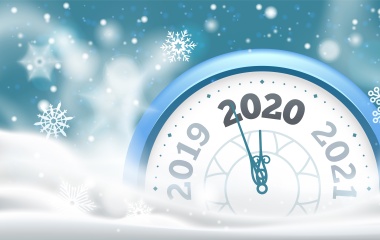
The haunting, powerful and frightening words of Untenah Tokef – who shall live and who shall die – is for many the emotional highlight of the High Holiday davening. Yet this “prayer” concludes on an upbeat and optimistic note, offering great potential. “Teshuva, tefillah u'tzedakh, repentance, prayer and charity, have the power to annul the evil of the decree”.
“Because of this”, the Rambam writes “it is customary for all of Israel to give profusely to charity, perform many good deeds, and be occupied with mitzvot from Rosh Hashanah until Yom Kippur to a greater extent than during the remainder of the year. During these ten days, the custom is for everyone to rise at night and pray in the synagogues with heart-rending words of supplication until daybreak” (Rambam, Hilchot Teshuva 3:5).
These heart-rending words of enhanced prayer are what we know today as selichot[1]. In other words, selichot are a fourth daily prayer service, adding a pre-dawn tefillah to the morning, afternoon and evening daily prayers. Hence the selichot are modelled after a standard prayer service. They begin with ashrei, have a central focus an “amidah[2]” consisting of the 13 attributes of G-d and conclude with tachanun and kaddish.
The Shulchan Aruch (Orach Chaim 581:1) quotes a custom that the one who leads the selichot service should also serve as the prayer leader for the prayers of that day. As the commentaries explain one who starts a mitzva should be given a chance to complete that mitzva. This seems to be a very strange custom. We do not have a custom that one who leads Shacharit should lead Mincha - each is an independent mitzva even as they both fall under the rubric of prayer.
Apparently, selichot is not an independent prayer service but rather serves as a kind of introduction to shacharit. Hence the one who leads selichotshould also lead shacharit. If it is connected to shacharit why not just add it to shacharit as we do with selichot the rest of year, saying the on fast days immediately after the amidah?
We approach G-d in prayer in two contradictory ways. We acknowledge that we are sinners, stiff-necked, and unworthy of life itself. We declare that we are no better than animals, that we have sinned from A-Z, or shall we say from ashamnu to taeinu. We meekly approach G-d acknowledging that we are unworthy. Hence as we begin shacharit on Rosh Hashanah the Chazzan stands at the back of the shul and very quietly hums afraid to approach G-d in prayer. He slowly grows louder as he finds the nerve to call out “The King”. The lowliness of man is a theme we see over and over again as we recite the selichot – and only through the mercy of G-d are we forgiven and given a chance to do better.
Yet at the same time prayer acknowledges the greatness of the Jewish people, the great devotion of our people, our willingness to sacrifice for the sake of G-d, our continuing to call out the name of G-d. G-d Himself seeing our devotion is prompted to declare “who is like Your people Israel, a unique nation on earth” (Divrei Hayamim 1, 17:21)[3].
Prayer almost by definition is dependent on the greatness of man. If selichot reflect the lowliness of man, the thrice daily recital of the Amidah reflects the greatness of man. Who else is allowed to stand before a king, and with no shame list off request after request? To be allowed to do so to the King of kings is, as the Ramban (Sefer Hamitzvot, #5) so beautifully explains, an act of kindness granted to very special people[4].
Selichot and shacharit are flip sides of a coin that is both heads and tails. To lead one but not the other is a “distorted” version of prayer. We are both no better than animals and just a little less than G-d. And the same person should declare both on behalf of the community.
Rosh Hashanah is a day we coronate the King of kings. Malchiot, G-d’s kingship is the theme of the day and runs throughout the Rosh Hashanah Machzor. Fascinatingly, there are no selichot on Rosh Hashanah, barely even a mention of teshuva, repentance. It is a day to celebrate that G-d is our King and the Master of the Universe. As Ezra and Nechemia told the despondent Jews returning from the Babylonian exile, “Go, eat choice foods and drink sweet drinks and send portions to whoever has nothing prepared, for the day is holy to our Lord. Do not be sad, for your rejoicing in the Lord is the source of your strength” (Nechemia 8:10).
It is Yom Kippur that is the day of selichot, the day we dare not celebrate with “food and sweet drinks”, the day we acknowledge how we have sullied the great gifts that G-d has bestowed upon us. We are sinners. We will hopefully do better but we are sinners. It is selichot and more selichot and more selichot[5]. Man is truly lowly.
Yom Kippur focuses on our failings of the past year while on Rosh Hashanah we focus on the year ahead, one we hope will be filled with sweetness and all good things. It would seem to be much more logical that Yom Kippur should be observed before we celebrate the New Year. Yet as we all know Rosh Hashanah comes first. We are a people that first and foremost looks ahead to a great and glorious future. If we dwell on the past – or even start with the past – it would be hard to go on, to build after destruction, to return after exile, to be victorious after defeat.
For those born after the Holocaust – the vast majority of us – the year 5784 has been the worst year we have experienced as Jews. Yet at the same time we have witnessed the unbelievable strength and resilience of our people. So many acts of heroism, of stoic courage and determination. The past is tragic – yet the future can always be better. We pray that the King of kings treats his beloved subjects with love, kindness and mercy. May the coming year be one in which all will come to recognize G-d's majesty and all nations will join in prayer on G-d’s holy mountain (Yishayahu 56:7).
[1] While our custom today is to begin recital of the selichot before Rosh Hashanah – Ashkenazim from the Saturday night prior and Sefardim beginning a month before – the Rambam (and the practice today of Chabad) notes that selichot are recited only during the aseret yemi teshuva, the days in which our fate is determined.
[2] It is not coincidental that the halacha is that one must stand for the 13 attributes whenever they are said. It is even proper to do so when they are read on a fast day.
[3] The Talmud (Brachot 6a) goes so far as to declare that it is this verse which is written in G-d’s Tefillin. (The meaning of G-d’s Tefillin we will leave for another time)
[4] The Ramban argues against the Rambam, claiming that prayer is not an obligation but rather a gift from G-d, allowing us to approach Him. Imagine how our tefillot might look if we could take this Ramban to heart.
[5] Rav Soloveitchik was very troubled by the fact that our machzorim only have printed selichot in Maariv and Kol Nidrei, something most likely due to a printing error. He thus insisted at his minyan that selichot be said at Shacharit, Musaf and Mincha.



